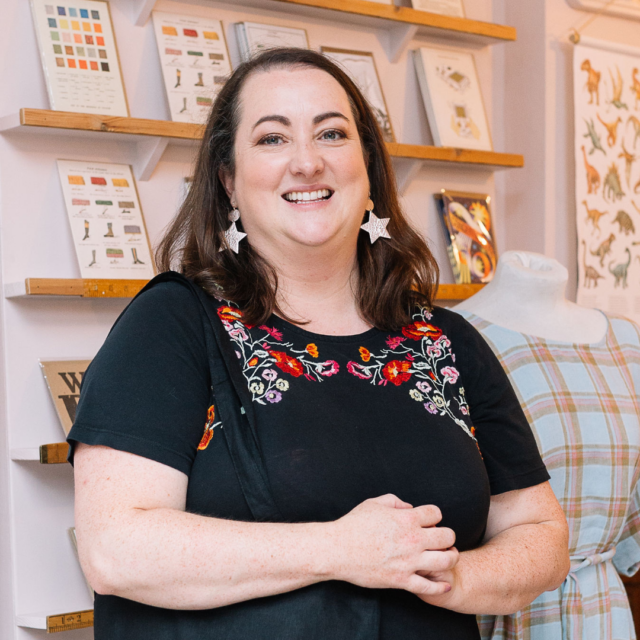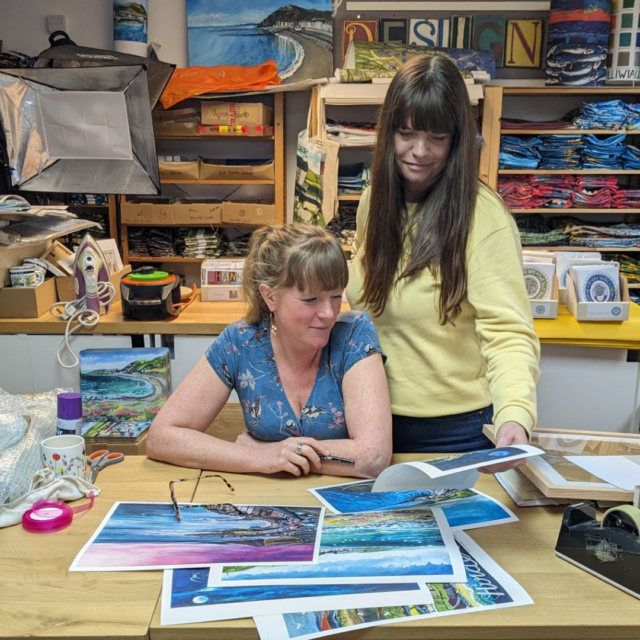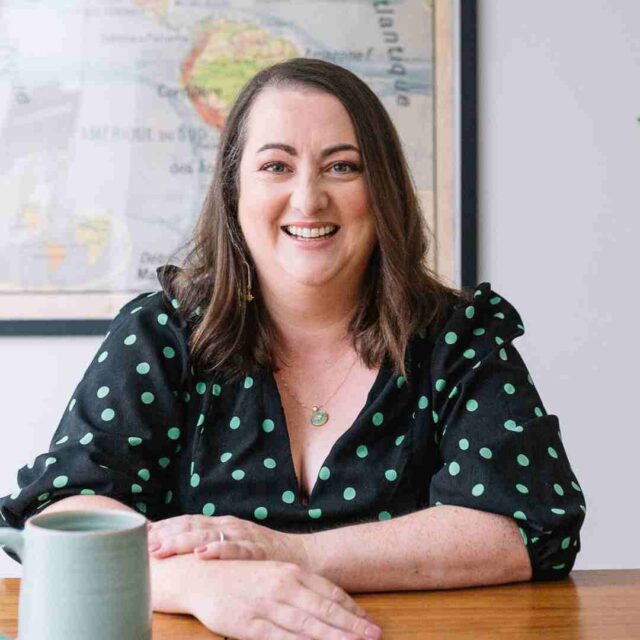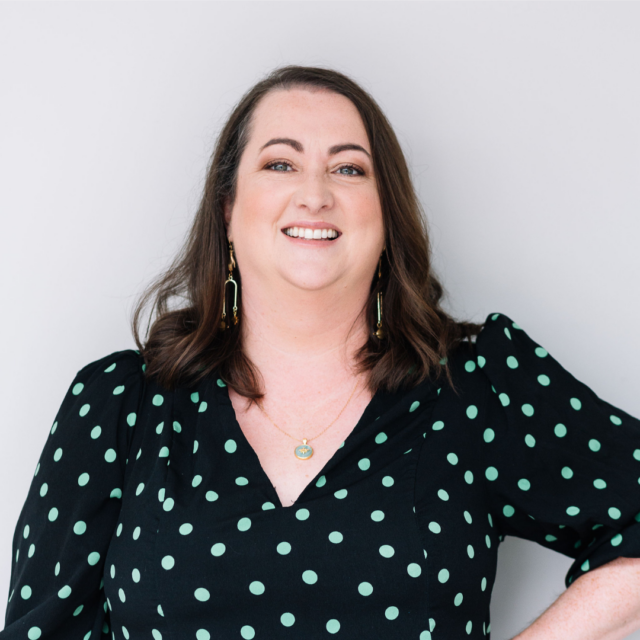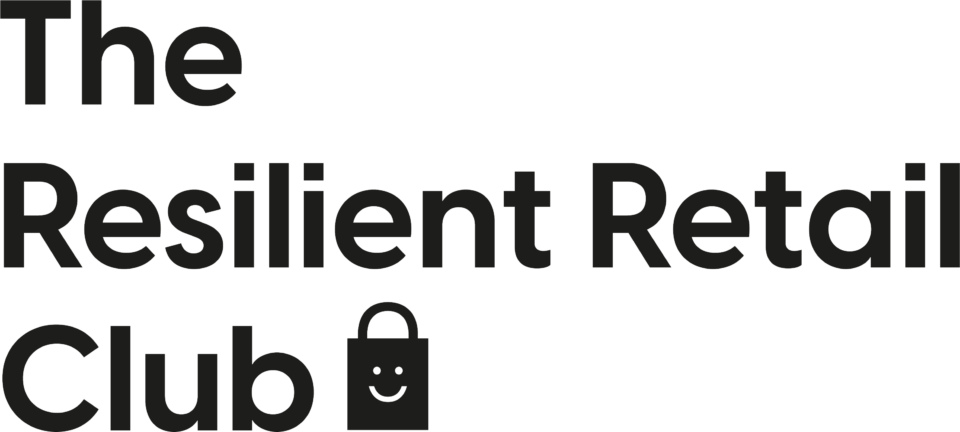Catherine Erdly: Welcome to episode 176 of the Resilient Retail Game Plan. Hi, I’m your host, Catherine Erdly. I’m also the founder of the Resilient Retail Club. The Resilient Retail Club, my membership group and mastermind for product businesses, head over to resilientretailclub. com and find out more about both the club as well as my mastermind, which will be kicking off again in January.
Today, I’m really delighted to be joined by Lindsey Schneider. She is the founder of the self tanning brand, Get Into the Limelight, and she shares her story, which is a really fascinating insight into building a brand using influencer marketing and bootstrapping the business, doubling its turnover year on year with no outside investment.
Lindsay talks all about the challenges of being a founder and when to figure out what to hand off, how to avoid being a bottleneck for growth in the business and also of course, how to work with influencers most effectively so that you can take calculated risks.
Welcome to the Resilient Retail Game Plan, a podcast for anyone wanting to start, grow or scale a profitable creative product business with me, Catherine Erdly. The Resilient Retail Game Plan is a podcast dedicated to one thing, breaking down the concepts and tools that I’ve gathered from 20 years in the retail industry and showing you how you can use them in your business. This is the real nuts and bolts of running a successful product business, broken down in an easy, accessible way. This is not a podcast about learning how to make your business look good. It’s the tools and techniques that will make you and your business feel good.
Confidently plan, launch and manage your products and feel in control of your sales numbers and cash flow to help you build a resilient retail business.
Lindsay Schneider Busines Backstory
Catherine Erdly: Hi, Lindsay. Thank you so much for joining me today. Do you want to start off by introducing yourself and your business?
Lindsay Schneider: My name is Lindsay Schneider. My business is Get Into the Limelight, which is a luxury line of sunless tanning products and accessories.
Catherine Erdly: Fantastic. Thank you so much for joining us today. And I’d love for you to just tell us a little bit more about your background. You’ve got quite an interesting background when I was reading your backstory. You’ve been involved in a lot of different things and I’d love to hear a bit more about that. And then what made you decide to start your business?
Lindsay Schneider: Sure. So, I went to college and studied Chinese international business and marketing. And when I graduated, I was hired to live and work in Dongguan, China. I was sourcing all different kinds of products like leather sofas for restoration hardware and stuffed animals for edible arrangements and trampolines for QVC, all different kinds of things.
I was in and out of factories and I found there were a lot of really cool products that weren’t making it to the States. So I just thought, why don’t I buy a couple of these selfie lights? At the time Kim Kardashian was just talking about the selfie and I thought, there’s these cool selfie lights. They’ll clip onto the back of your phone. I’ll buy a couple hundred and see what happens. So I trademarked it, called it the limelight and I was selling out a product. So, that’s how Getting Into the Limelight was born.
Catherine Erdly: And where were you selling it at that time? What year are we talking about?
Lindsay Schneider: So this was 2016. I was selling on Squarespace at the time, just on my own website. This is before Shopify really took over and became the number one e commerce platform. So I was just selling it really on my website based on Squarespace.
Catherine Erdly: Amazing. And which social media? Was it Instagram in 2016?
Lindsay Schneider: Yes. So I started selling on Instagram. It was such a different time. Working with influencers was such a different time. Posting was so different. I think if I were to start my business now, it would be a lot more difficult to get to where it was versus starting it in 2016.
Catherine Erdly: So you started off with the selfie lights. You bought 200, they sold out. And so then you just kept going from there?
Yeah.
Lindsay Schneider: So about 500, they sold out, I bought another 500, they sold out and I was following trends. Like I said, Kim Kardashian was just talking about the selfie. And then the next biggest trend was silicone makeup sponges. And there are these little tiny sponges people would use to blend in their makeup.
And I decided to infuse them with glitter. So, it was just the next thing. And I felt like I was chasing trends and the product I did after that was probably the biggest learning experience for me.
Biggest Lesson For Lindsay – Shifting her business
Lindsay Schneider: What I found were these disposable phone chargers and they’d come in a little pack.
You’d open up the pack, stick it into your phone and it would be great if you were at a music festival or somewhere where your phone was going to die and you couldn’t plug it in. I thought it was such a good idea and it ended up being such a flop. People don’t want a disposable phone charger till they really need a disposable phone charger.
And because it was disposable, it had a limited shelf life. So if I didn’t sell them in a certain amount of time, the product just went into the trash and it just was really a learning experience. It was then when I took a look at the business and I said, I’ve got these three products that I’ve built.
I’ve got this selfie light, these makeup sponges and these phone chargers. They don’t really go together at all. And I was spending the time getting customers and they weren’t really coming back to the store. I didn’t have a niche. And so I went back and I thought, what could I do that would have people coming back?
And it was something that I was really passionate about. That wasn’t just trendy. And for me, that was always self tanner. It was just my number one business. My number one beauty thing. Some people love their mascara. Some people love their bronzer. For me, it was like, I couldn’t walk out the door without having self tanner on.
So I thought, why didn’t I take my product development experience, making sofas and making trampolines and make my own self tanner? And that’s where Getting Into the Limelight shifted from the selfie light glow to this tanning glow. So I kept the name and just transitioned into a different kind of glow.
Catherine Erdly: So what year was that when you launched the self tanner?
Lindsay Schneider: It was actually Black Friday of 2018.
Catherine Erdly: Goodness, five years.
Lindsay Schneider: Yep. Five years.
Catherine Erdly: Because skincare has its own product development cycle. It has all of these extra hoops that you have to jump through.
Did Lindsay find it daunting to get into skincare development? – Overview of the developing process
Catherine Erdly: Was that a learning curve or were you, by that point, so entrenched in product development and sourcing that you were like, no, I’ve got this?
Lindsay Schneider: It was definitely a different category that I hadn’t really done before, but my manufacturer for my self tanner is Stateside and they have just a wealth of knowledge. I feel like now I know so much, but when I was creating my self tanner, I just wanted to be a sponge and absorb as much of the product, how it works and the different pieces of it, how it all works and so I can really create the best self tanner.
So it was a learning curve, but I just had a great team that really helped me to understand it. So that I could work with them to build the self tanner that it is today.
Catherine Erdly: And how many different iterations did you have to go through before you found the perfect one? Because I think I read that you said that you had one self tanner that you loved, but you didn’t like the smell. And then one that was great, but it was too sticky. And so how many?
Lindsay Schneider: Yeah.
Catherine Erdly: Did you have to go through the process before you’re like, right, this is it. This is the formulation?
Lindsay Schneider: So I’ve been using self tanner forever and I know what’s out there. So when talking about this one’s too sticky or this one’s too… I knew what I didn’t want. So working with the manufacturer, it was so easy to find what worked. And then it was really just a matter of kind of tweaking. Maybe two rounds.
The biggest thing for me is scent. I don’t want to sit with something that smells so icky. As soon as we nailed that the rest of it was just small tweaks.
Catherine Erdly: And is that still the main formulation that you use now or? Yeah, it is! So the original is still the one five years later.
Lindsay Schneider: It works. It works and I don’t want to mess with it. So that’s what I’m selling now. So we’ve got the dark and ultra dark version, which is the same formula, but just an increase of ingredients. And then we’ve got a two hour dark, which is the base of our dark, but again, an increase of ingredients and a two hour ultra dark.
So it’s really the same formula. .
Catherine Erdly: So you were originally chasing the trends with the selfie light, with the makeup sponge and with the disposable charger, which obviously didn’t quite work out so well. And then you stop chasing the trends, but you really honed in on that product.
Did Lindsay need to shift how she marketed her product after shifting her business?
Catherine Erdly: Did you then have to shift your whole mindset about how you were marketing, that brand building? I suppose before it wasn’t it wasn’t so much about building the brand, it was about finding that trend product. But now all of a sudden in 2018, you had to switch to, actually, no, I’m creating a brand that stands for something.
Lindsay Schneider: I think the core of the business since 2016 has always been about making yourself feel good. Look good and feel good. So at the core of the business, it was always the same, but I think there’s just a different mindset of having more of an actual beauty product.
Yeah, it was more of a branding endeavor versus before it was more of just like, here’s a product, and it works and you might want to buy it. This was more, I’ve got the best product and it works and you want to buy it for sure.
Catherine Erdly: Yeah. Yeah. So then from 2018 to now, obviously you’ve grown it then, so you’ve grown it around this amazing self tanner.
What have been some of the biggest challenges along the way?
Catherine Erdly: What have been some of the biggest challenges along the way?
Lindsay Schneider: That’s a great question. Working with influencers has probably been the hardest thing. It’s just really changed.
So when I started in 2016, the influencer was with hundreds of thousands of followers was charging 200 a post. Then it slowly went to 500 a post. And now that same influencer is charging 8,000 a post. And it’s trying to figure out how to spend wisely. And taking calculated risks with advertising, I think that has been the biggest challenge.
Just making sure that the influencers really love the product, that there’s authenticity that shines through, that it’s not just another sponsored post. And that’s what led me into doing some co branded collaborations where influencers are putting their name on the product and really standing behind it.
I think just growing and adapting to that trend has been. a challenge. And that’s also what’s made the business succeed, I think, to what it is.
Catherine Erdly: So you’ve always worked with influencers really right from the get go.
So that’s always been a pivotal part , from when it was selfie lights all the way through to now.
Lindsay Schneider: Yes.
What has been the biggest things to propel her business forward?
Catherine Erdly: I know it’s been the biggest challenge, but would you equally say it’s the biggest thing that has propelled the business forward?
Lindsay Schneider: Definitelly. I think that when people love a product that they are going to run out of and rebuy, that’s what really has propelled the business forward, the rebuy. I always say, it’s not getting it into somebody’s hands the first time it’s having them rebuy the second time.
So I put a little mailer in with every order that says, Hey, if you love it, here’s a 15 per cent off code that you can use on your next orders. If they’re going to buy it once, that’s great. If they’re going to buy it twice, they’re probably going to buy it a third and a fourth and a fifth.
Catherine Erdly: Right. So you’re getting into that replenish purchase, which I know is huge in beauty. Do you know roughly what percentage of your customers are returning?
Lindsay Schneider: It’s about 30%.
Catherine Erdly: Okay. All right.
Lindsay Schneider: One of the challenges was with just having it be self tanner. I think along with that growth, one of the other biggest things is I realized I couldn’t do everything on my own. Like I had shipped orders out of my house for years. And it was just getting to the point where I’m carrying bags and bags to the post office. I’m like, okay, I’m about to have a baby, I can’t do this anymore. And I think being able to let go of some of that control, that was one of the other really big things that happen when the business turned into a self tanning business.
Catherine Erdly: Right, I see. So you were able to step back and to hand off some pieces of it, which allowed it to then grow bigger.
Lindsay Schneider: Yeah, and I’ve done everything I can do until I couldn’t do it anymore, even like filling myself, tanning drop bottles. So that’s not a mousse. That’s like a little one ounce drop bottle. I filled those by hand by myself for years and finally I’m like, I can’t do this anymore. Now I’ve outsourced that.
So really, I think another piece that’s really helped the business grow is just doing as much as I could until I can’t do it anymore. Asking for the help and being accepting of that help too.
How do you know when you are ready to hand off control?
Catherine Erdly: You’ve nailed it in terms of, in order for business to grow, it has to get to that point where the founder is ready to hand off control, but how do you know when you’re at that point? Because I think some people listening to this will be thinking, yeah, I don’t know if I’m at that point yet. it?
Lindsay Schneider: You
just know, you’re like, I can’t do this anymore. I can’t. I just knew. It’s when it’s overwhelming and it’s not, I don’t want to say not fun because I do love packing orders, but when it’s overwhelming.
And at that point I’m like, look, someone else is now doing my fulfillment. I can focus on the things I love and know it’s taken care of. And even that was just a process. I went through three different fulfillment centers before I found… I was with one that was too big, one that was too small.
And now I found my Goldilocks! It was a learning curve. It really was.
Catherine Erdly: People move to fulfillment centers quite frequently. And I feel like it’s one of those things that i s often a bumpy road. But when you find the right partner, it can be transformational.
So in terms of handing off then, you started with fulfillment?
Lindsay Schneider: Yep. Yes.
Yep Yep
Catherine Erdly: Also, I guess you were talking about actually filling the bottles yourself.
Lindsay Schneider: And I actually stopped doing that last month. So I introduced that product, I think it was 2020 and I’ve been doing that for three years by myself. So, that’s a big thing too, but people were ordering it and reordering it. And I’m like, I can’t keep filling these all by hand one by one.
I’m using like a ketchup pump almost. And filling a bottle, screwing it on, putting a label on, putting that in a bubble. It’s a lot of work. When I could be doing other things to grow.
Catherine Erdly: Yeah. Yeah. Product development or, almost anything, right?
Lindsay Schneider: Right, exactly.
Catherine Erdly: So in terms of propelling the business forward, it was learning when to let go , letting other people help. So asking for that help when getting the help. Is that just, would you say an ongoing process? As the business grows, you’re like right, I’m going to hand this piece off and then this piece more than a full strategic forward thinking plan. It’s more like, right, I just get to the point where I can’t do this anymore. Let’s get some help.
Lindsay Schneider: And again, it’s like that calculated risk. It’s like, can I afford this too? Because it comes with an added cost. It’s looking at costs and building in what makes sense. I was so nervous to do it. I was doing free shipping for years. And then when I moved to fulfillment, I started charging 5 dollars for shipping and I’m like, no one’s going to buy my products.
And the 5 dollar off code that I’ve been giving, now it just basically makes it free shipping and it didn’t even help my sales. I was so, so scared to make a change and it ended up being such a great thing for the business.
Catherine Erdly: Yeah, for sure. And I think those are the places where it can really eat away at your profit margin if you’re not careful. And then even if you’re growing top line, it’s not as much bottom line as you want to see.
Lindsay Schneider: Exactly. Exactly.
Catherine Erdly: So, going back to the influencer piece thing, because I’m curious to hear.
So it’s been a big learning curve and a real challenge to deal with that kind of marketplace. It has shifted over the last seven years, but obviously, it is a really core part of the way that you market the business. And as you said you got these partnerships where you co create the products or product ranges or special accessories with particular influencers.
Any advice that you’d give on choosing influencer partnerships?
Catherine Erdly: You touched on this before because you talked about how you had to make sure that they actually really love the product. But is there anything else, any advice that you’d give on choosing influencer partnerships?
Lindsay Schneider: Sure. I feel like I could write like a chapter book on this, but here’s are a couple of things.
One, when working with like reality TV stars, let’s say having someone with a strong female following, looking at their following and making sure it makes sense for the business. That’s one big thing.
Also, not just celebrities, but working with micro influencers and midsize influencers who really love the product. Some of my affiliates that are on commission only, they bring in more than the people I’m paying thousands and thousands of dollars . They’re motivated and they love the product.
So, affiliates and commission-based influencers, they’re motivated and sometimes they convert even better than someone with millions of followers. So I think, it’s just having a diverse range, making sure it makes sense for the business to get with, like for me, it’s that female following.
That’s been really helpful. But also, I just did a collab with Sammy Sweetheart from Jersey Shore. She’s been posting about and using my product for four years. So when I wanted to create a two hour version of the same product, she said I love your product. I don’t know that I would have done this if I didn’t love your product.
It’s so meaningful to have somebody behind the brand that genuinely loves the product. Same thing with Amanda Stanton, from The Bachelor, she struggles with acne and has acne prone skin. And so to have a self tanning product that’s fragrance free and non commonogenic. It was a game changer for her.
So really having those influencers that stand behind the product, I think is such a game changer.
Catherine Erdly: So that’s the basis for building a relationship, then it has to be a genuine relationship.
Lindsay Schneider: For me, yes. I don’t know how everyone else works, but for me, I want someone that I genuinely love that I follow on Instagram, that I know what they stand for, that I know that they’re a good representation of the brand and they genuinely love the products that they’re creating with.
Catherine Erdly: Right. And so do you find then the most fruitful ones have been the ones where it is almost like you’re following someone, you love the content, maybe, they’re a customer or maybe you get into that conversation and it’s like a mutual respect or enjoyment of each of working with each other rather than literally just, who’s got the biggest following?
Lindsay Schneider: Totally. I always say their heart has to be in it because if their heart’s not in it and they’re just doing it for the money, the followers, the audience, they see right through that. And I think that it also makes it so the influencer wants to work for the brand too.
They want to promote it and they’re excited about it. That’s really important to me.
Catherine Erdly: Yeah, for sure. And it’s interesting what you’re saying there about the affiliates because I’ve recently been working on my retail trends for 2024 and in my head what I’m seeing a lot of, the research that I’m reading about is suggesting more and more this almost like decentralization of people’s ad spend.
So whereas it may have been putting all of their money into meta ads or TikTok ads or just social media advertising in general instead of paying it directly to the platform, it’s almost like that creator economy is growing hugely. Affiliate marketing is growing.
So instead of it all going to the platform, it’s decentralized and rewarding ultimately the people that really love the product. So like in the affiliates’ case, they’re using product that they love. They’re talking about it. And then their followers are buying through their affiliate links.
So they’re being rewarded and presumably it works pretty well for you as a brand, right?
Lindsay Schneider: Totally.
Catherine Erdly: The commission is paid when the sale happens not before.
Lindsay Schneider: Exactly. It’s low risk. That’s definitely one benefit. I’ve also started for my top performing affiliates, I pay them a quarterly sponsored post rate to post every quarter and that’s really helped too. I get exclusivity, they’re not able to post about any other brand in the self tanning category and they’re posting consistently.
So they’re getting the commission and they’re getting a sponsored post rate each quarter. And I do that for my top performing six or seven affiliates.
Catherine Erdly: And presumably that’s really low risk too, right? Because you know for a fact that they convert.
Lindsay Schneider: Exactly. But it takes time to get there, to build those relationships, to ask them to post just for commission. If someone comes to me and says, are you taking sponsored posts? I know that their heart isn’t in it. And again, that to me is a deal breaker from the get go.
It’s a deal breaker. Your heart’s not in it. You don’t really care. You just want the money. So no, sorry. We’re not doing that right now. I want someone who’s willing to show me they convert. And if they convert, I will pay you. I will pay you to post about it consistently. And it’s taken me time to figure that out for sure.
There’ve been many times where I’ve paid an influencer. They posted, zero dollars back, orders. And it’s just been a trial and error type thing. And even now it’s a gamble, someone can have a ton of followers and convert nothing.
So, yeah it’s a learning curve sure.
Catherine Erdly: And I think it’s really interesting because I quite often have this conversation with people about influencer marketing, lwhen they’re working on it, they may try a few people and then it maybe doesn’t convert.
But I really think when you talk to the people who do it extensively, like yourself or other brands that have used influencers predominantly to build their business, it is like that. It’s like, you’re almost trialing people out, right? You’re trialing all of these different people that you think should be a good fit, but then you try it and then some people convert, some people don’t and then over time you get your stable, right? Your group of people that, okay, I know this person converts but you have to kiss quite a few frogs along the way, right?
Lindsay Schneider: Totally. And sometimes it’s just luck. Some of my posts go totally viral and if they’re posting consistently, maybe it doesn’t get that same reach. So there’s that element of it too. That’s like just how many views is it going to get? How does it work with the algorithm? Yeah, it’s definitely a game of trial and error, kissing lots of frogs for sure.
Catherine Erdly: And to do it hopefully in a way that is not too high risk, right? Because it’s hard to kiss too many frogs when it’s costing you a lot of money to do so.
Lindsay Schneider: I have so many spreadsheets to looking at my ad spend, figuring out how I want to do it differently the next year.
Every year. I say, how am I going to do this again next year? How am I going to get the business to where it is? It has doubled every year. And I still don’t know how I do it, but if I had to say why I would think it’s from just really taking calculated risks, just being smart with my money, whether it’s outsourcing or paying for sponsored posts or affiliates or co branded collaborations or wherever the money is going, just really making sure it’s a calculated risk.
Catherine Erdly: Yeah, for sure. No, I love that. And I’m a big fan of a spreadsheet personally.
So that’s how you’ve grown it, effectively then. Doubled it every year, so bootstrapped effectively?
Lindsay Schneider: Totally. Yep. Completely
Catherine Erdly: And by paying attention to where the money’s going, taking those risks, outsourcing when you hit pinch points, when you as the founder are at the point where you can’t do any more and then bootstrapped.
I always say that I feel like all of retail can be summed up as do more of what works and less of what doesn’t.
Lindsay Schneider: That’s so true. It’s so true.
Catherine Erdly: And it sounds so obvious when you say it like that, but it’s exactly what you’re talking about. It’s like you’re going through it and saying, right, what works and I’m sure that there are things that are calculated risks that don’t pan out, but it sounds like a lot of them do.
Lindsay Schneider: Yeah. I’ve had a share of nightmares too, of people that’ll get content approved and then they’ll post something different or I’ll pay them and they will never post. They’ll just run with the money. I’ve had, my fair share of nightmares too. But I would say overall that it’s definitely been those calculated risks that have gotten the business to where it is for sure.
Catherine Erdly: Fantastic. Well, thank you so much for sharing your story.
What’s the plan for 2024?
Catherine Erdly: What’s next, what’s the plan for 2024?
Lindsay Schneider: That’s such a good question. I don’t know. I love these collaborations, they’re so much fun. It’s so great to have someone that I really admire, partner with the brand. So looking forward to something like that in 2024. Also making some new products, expanding the line a little bit.
I think those are my biggest things. And, like you said about just doing more of what works and less of what doesn’t.
I watch Shark Tank all the time and people come in and the sharks say what do you want from a shark? And they say, I want to get in retail and everyone goes, oh, retail, why do you want to do that? And it’s like, in the back of my mind, I’ve always wanted that too. I would love to be in those big stores, at the big, giant stores. And then I would think to myself, maybe I don’t… maybe what I’m doing now is working.
Maybe I need to do more of what’s working and less of what’s not. So, I think about that all the time too. Especially when I have that mindset of reach for the stars and I think about that kind of stuff and maybe that’s not the best path. So I really love how you said that.
Learn More about Lindsay
Catherine Erdly: Well, thank you so much and do tell us where we can find out more about you.
Lindsay Schneider: Yes, www.getintothelimelight.com. And we’re also on Instagram and TikTok and Facebook, Get Into the Limelight.
Catherine Erdly: Thanks so much for tuning in. It was a fabulous episode jam packed full of some great insights into influencer marketing. Want to have a head over and say hi on Instagram at Resilient Retail Club and let me know what you took away from the session today. Also don’t forget to subscribe to the podcast or follow it in either Apple podcast, Spotify, or wherever you listen to your podcasts.
If you have a moment to rate and review the podcast, it makes a huge difference. You can rate and leave a review in Apple podcasts, or you can also rate it inside the app in Spotify. Until next week. See you then.

